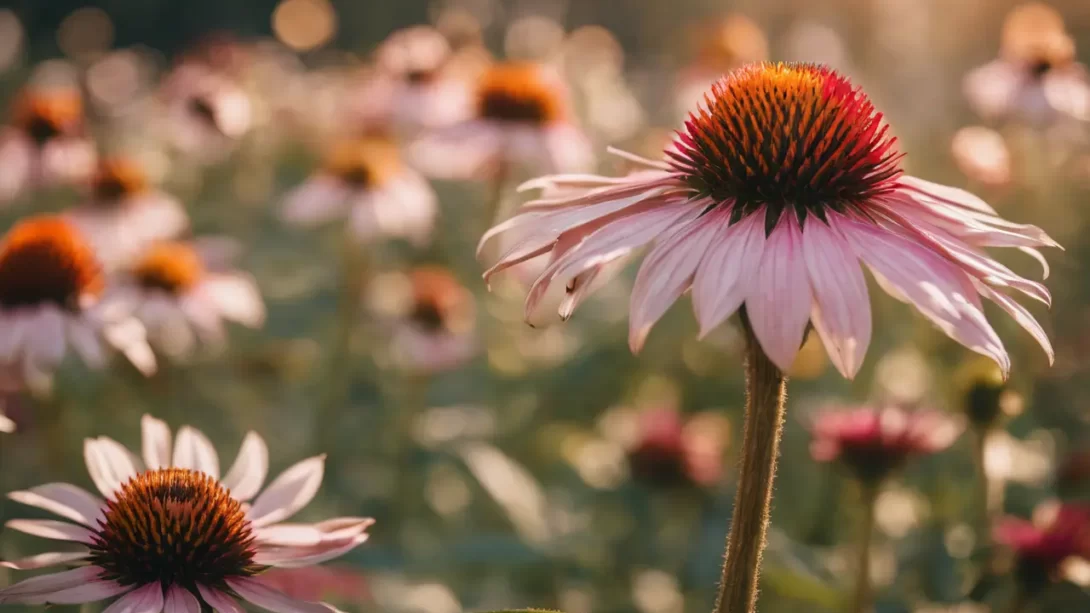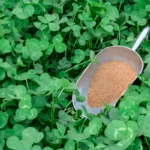Echinacea, commonly known as coneflower, is a beloved perennial in many gardens. Not only is it prized for its vibrant and colorful flowers, but it also holds medicinal properties, particularly in boosting immune health. This hardy plant is relatively easy to grow from seed, making it a popular choice for gardeners looking to add both beauty and function to their landscapes.
Echinacea and Its Varieties
There are several varieties of Echinacea, each with its unique charm. The most common is Echinacea purpurea, known for its large purple flowers. Other varieties include Echinacea pallida, with pale pink flowers, and Echinacea angustifolia, known for its medicinal properties. Echinacea plants are suitable for USDA hardiness zones 3 through 9, thriving best in full sun to partial shade. They are adaptable to a range of soil types but perform best in well-drained soil.
Seed Selection and Preparation
Choosing high-quality seeds is crucial for growing Echinacea successfully. Look for seeds from a reputable supplier to ensure they are viable and disease-free. Some Echinacea seeds benefit from stratification, a process of cold treatment that breaks seed dormancy and encourages germination. This can be done by placing the seeds in a moist medium, such as sand or peat moss, and refrigerating them for several weeks before planting.
Starting Seeds Indoors
Starting Echinacea seeds indoors can give them a head start, especially in regions with short growing seasons. Begin 8-10 weeks before the last expected frost date. Use a well-draining seed starting mix and plant the seeds at a shallow depth, about 1/4 inch deep. Keep the soil consistently moist but not waterlogged, and maintain a temperature of 65°F to 70°F for optimal germination. The seeds typically germinate in 10-20 days, but some may take longer.
Providing adequate light is essential once the seedlings emerge. Place them near a sunny window or under grow lights for 12-16 hours a day. Rotate the seedlings regularly to ensure they grow straight and strong. This initial indoor nurturing sets the foundation for robust Echinacea plants ready for transplanting to your garden.
Transplanting Seedlings
Once the Echinacea seedlings have grown strong and the danger of frost has passed, it’s time to move them outdoors. Begin the hardening off process about a week before transplanting. This involves gradually exposing the seedlings to outdoor conditions to toughen them up and reduce shock. Start by placing them outside in a shaded, sheltered spot for a few hours each day, gradually increasing their exposure to sun and outdoor temperatures.
When selecting a spot in the garden for Echinacea, choose an area that receives full sun for at least 6 hours a day. These plants thrive in sunlight and will produce more blooms in brighter locations. Prepare the soil by loosening it and adding organic matter if needed to improve drainage. Echinacea plants should be spaced 1 to 3 feet apart, depending on the variety, to allow for ample growth and air circulation.
Dig a hole for each seedling that’s as deep as the root ball and twice as wide. Gently remove the seedling from its container, being careful not to disturb the roots, and place it in the hole. Fill in with soil and press down gently. Water the seedlings thoroughly after planting to settle the soil around the roots and eliminate air pockets.
Care and Maintenance
Regular care is essential for the healthy growth of Echinacea. Water the plants deeply and regularly, especially during dry periods. Echinacea is drought-tolerant once established, but consistent moisture is important in the first growing season to establish a strong root system. Overwatering should be avoided, as Echinacea does not like soggy soil.
Fertilization is not typically necessary for Echinacea, especially if you’ve enriched the soil at planting time. However, a light application of a balanced, slow-release fertilizer in early spring can promote vigorous growth. Be sure not to over-fertilize, as this can lead to lush foliage at the expense of blooms.
Weed control is important, especially when the plants are young. Mulching around the plants can help suppress weeds and retain soil moisture. As the plants mature, they will crowd out most weeds. Deadheading, or removing spent flowers, encourages Echinacea plants to produce more blooms and extends the flowering period. Some gardeners choose to leave the last of the season’s blooms in place, as they provide winter interest and food for birds.
Regular monitoring for pests and diseases will help keep your Echinacea plants healthy. While they are relatively low-maintenance and not prone to many problems, they can occasionally suffer from issues like aster yellows or powdery mildew. Early detection and treatment can prevent these problems from becoming severe.
Pest and Disease Management
Echinacea plants are generally hardy and resistant to many pests and diseases. However, keeping an eye out for common issues is important. Aphids and Japanese beetles can sometimes be problematic. Organic solutions like neem oil or insecticidal soap can effectively control these pests. For diseases, such as powdery mildew or leaf spot, ensure good air circulation around the plants and avoid overhead watering to reduce the risk.
Encouraging Flowering and Harvesting
For optimal flowering, Echinacea plants require minimal intervention. They typically begin blooming in their second year and continue through late summer and fall. Deadheading spent flowers can encourage more blooms and extend the blooming season. If you’re growing Echinacea for medicinal purposes, flowers and roots can be harvested once the plant is well-established. The best time to harvest flowers is when they are in full bloom, while roots are best harvested in the fall of the third or fourth year.
Overwintering and Propagation
In colder climates, Echinacea plants may need some protection to overwinter successfully. Although they are perennials, a layer of mulch can help insulate the roots from freezing temperatures. As the plants mature, they can be divided every few years to maintain vigor. This is best done in the spring or fall. Additionally, you can collect seeds from mature plants in the fall to start new plants the following season.
Conclusion
Growing Echinacea from seed can be a gratifying experience for gardeners. These resilient, attractive plants not only add beauty to the garden but also offer medicinal benefits. With the right care, Echinacea can thrive with minimal fuss, making it a great addition to both novice and experienced gardeners’ plots. Patience in the first year pays off with abundant blooms in subsequent years, showcasing the enduring charm of this popular perennial.




